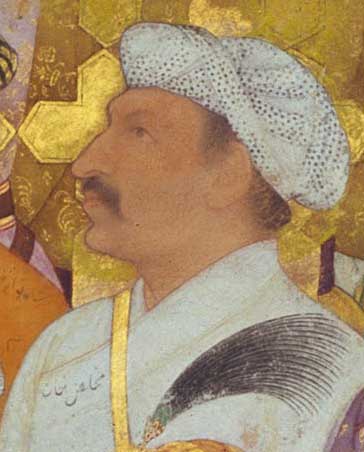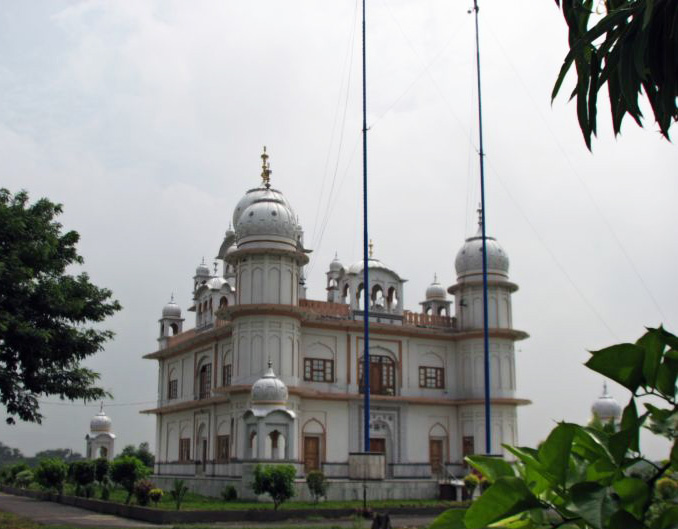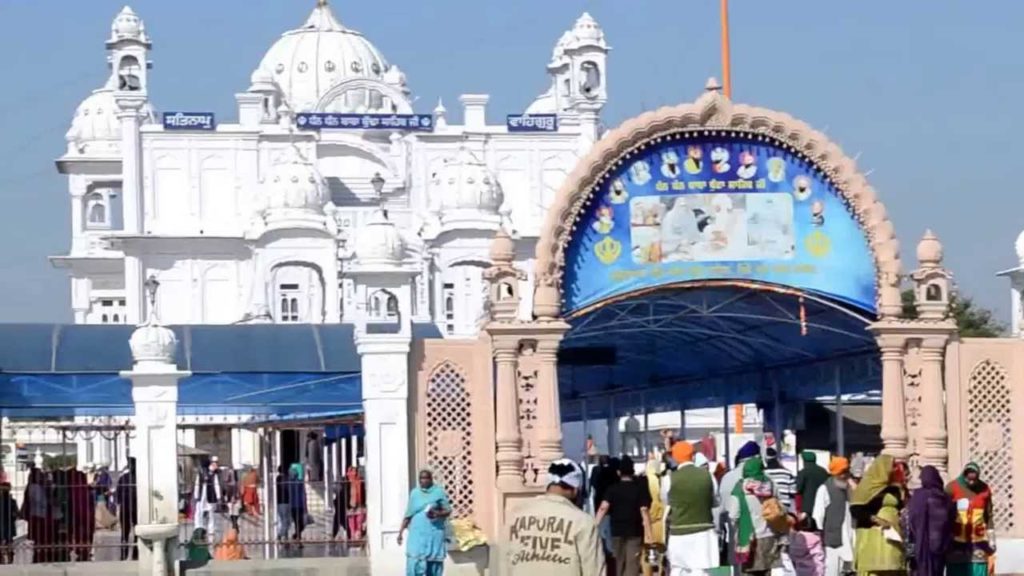Guru Tegh Bahadur’s close encounters with the inevitable reality of death
![With an increasing number of deaths around the world due to Covid, death is an enforced topic of concern and discussion homes to political offices to the statistics departments of governments. Religious people and spiritual practitioners resort to a variety of faith-building techniques to provide relief to the families of the deceased. Specialist caregivers prepare terminally-ill patients for death with their training in palliative care. Spiritual practitioner Bhupinder Singh enumerates the various deaths witnessed by the Ninth Master Guru Tegh […]](https://www.theworldsikhnews.com/wp-content/uploads/2021/05/Life-and-death-360x266.jpg)
With an increasing number of deaths around the world due to Covid, death is an enforced topic of concern and discussion homes to political offices to the statistics departments of governments. Religious people and spiritual practitioners resort to a variety of faith-building techniques to provide relief to the families of the deceased. Specialist caregivers prepare terminally-ill patients for death with their training in palliative care. Spiritual practitioner Bhupinder Singh enumerates the various deaths witnessed by the Ninth Master Guru Tegh Bahadur in his formative years. He asks readers to imbibe the teachings of the Guru who prepares for death while leading normal lives.
THE INEVITABLE REALITY OF HUMAN LIFE IS DEATH. In fact, death and after-death remain unknown to us, while life is known as real and is being experienced, so naturally, it is cherished by us. As a consequence, we all strive to live forever, be it by using ambrosia or other easily available alternatives in the form of surgical interventions. We even try to shield children from exposure to death experience. We find it difficult to share the loss, its resulting void, including its reality with them honestly as we are unsure of their mental capacity to cope with it.
However, when early life has been shaped by multiple experiences of close encounters with this inevitable reality of life, it is bound to leave a lasting impression, by moulding the thinking process as well as shaping the outlook on life. The Ninth Master -Guru Tegh Bahadur’s life was filled with such experiences, yet he coped with them not just with tears but with resilience.

Let us first explore this aspect of transitory nature of life from the writings in the Sloks and then try to connect to the life experiences that shaped them.
ਜਗ ਰਚਨਾ ਸਭ ਝੂਠ ਹੈ ਜਾਨਿ ਲੇਹੁ ਰੇ ਮੀਤ ॥
ਕਹਿ ਨਾਨਕ ਥਿਰੁ ਨਾ ਰਹੈ ਜਿਉ ਬਾਲੂ ਕੀ ਭੀਤਿ ॥੪੯॥
ਰਾਮੁ ਗਇਓ ਰਾਵਨੁ ਗਇਓ ਜਾ ਕਉ ਬਹੁ ਪਰਵਾਰੁ ॥
ਕਹੁ ਨਾਨਕ ਥਿਰੁ ਕਛੁ ਨਹੀ ਸੁਪਨੇ ਜਿਉ ਸੰਸਾਰੁ ॥੫੦॥
ਚਿੰਤਾ ਤਾ ਕੀ ਕੀਜੀਐ ਜੋ ਅਨਹੋਨੀ ਹੋਇ॥
ਇਹੁ ਮਾਰਗੁ ਸੰਸਾਰ ਕੋ ਨਾਨਕ ਥਿਰੁ ਨਹੀ ਕੋਇ॥੫੧॥
ਜੋ ਉਪਜਿਓ ਸੋ ਬਿਨਸਿ ਹੈ ਪਰੋ ਆਜੁ ਕੈ ਕਾਲਿ॥
ਨਾਨਕ ਹਰਿ ਗੁਨ ਗਾਇ ਲੇ ਛਾਡਿ ਸਗਲ ਜੰਜਾਲ॥੫੨॥
Translation: The whole world is transitory (therefore false); understand this well, my friend. Says Nanak, it is like a wall of sand (impermanent); which gets blown away as it shall not endure (the blow from the storm in the form of death). ||49|| (Even) Raam passed away, so did Raavan, despite his large family (that could not help stave it off). Says Nanak, nothing lasts forever; the world is like a passing dream. ||50|| Become anxious, only when something unexpected happens in reality. (But) this is the way of the world, O Nanak; nothing is lasting (here). ||51|| Whatever has been created shall perish; everything is perishable, (it is just a matter of time) today or tomorrow. O Nanak, sing the Glorious Praises of the Lord, leaving all other entanglements. ||52||
Guru Granth Sahib, page 1429
 This is borne out of real-world experiences in life. Guru Sahib has described this reality of life succinctly; by sharing with us this reality of the transitory nature of the world is bringing our attention to it. Although, everyone in this world is cognizant of it, yet each acts as if it does not apply to him or her, as if carrying the exemption. The very act of trying to push the subject away on the false conviction of self’s invincibility does not alter the ground reality.
This is borne out of real-world experiences in life. Guru Sahib has described this reality of life succinctly; by sharing with us this reality of the transitory nature of the world is bringing our attention to it. Although, everyone in this world is cognizant of it, yet each acts as if it does not apply to him or her, as if carrying the exemption. The very act of trying to push the subject away on the false conviction of self’s invincibility does not alter the ground reality.
However, during that time of mourning of a death of a close relative or associate, this notion of self’s invincibility evaporates, only temporarily. At that time of grief, time is stretched out giving us a feeling of being drowned in an unending ocean. The feeling of loneliness is very strong, overpowering, giving rise to a feeling of helplessness. Imagine if this type of experience is replicated a few times, how emotionally devastating it can be, leaving us scarred for life unless we have some sound grief support system.
Let us explore Guru Tegh Bahadur’s life to understand how these experiences of grief moulded him into a resilient being -how he learnt from it and shared with us his observations for our benefit.

On 15 May 1628, the 7000-strong Mughal armies under the leadership of Mukhlis Khan attacked Amritsar. The Sikhs, upon receiving the advance information on the impending attack, evacuated Lohgarh, a small mud fort on the outskirts of the city, leaving only a small garrison to defend it. On the first day of the attack, the Mughal army overran the fort, but the next day there was one to one combat between Guru Hargobind Sahib and Mukhlis Khan, where the latter lost his life and as a consequence, Mughal forces hastily retreated.
The next day, Bibi Veero -daughter of Guru Ji’s wedding was solemnized at Jhabal, near Amritsar, simultaneously the dead in the battle were being cremated in Amritsar. Baba Tegh Bahadur’s eyes witnessed the sorrowful cremation of the dead in the battle with a subdued celebration of his sister’s wedding. The irony of happiness and sorrow being integral parts of life were firmly imprinted on Baba’s tender mind.
Bibi Veero -daughter of Guru Ji’s wedding was solemnized at Jhabal, near Amritsar, simultaneously the dead in the battle were being cremated in Amritsar. Baba Tegh Bahadur’s eyes witnessed the sorrowful cremation of the dead in the battle with a subdued celebration of his sister’s wedding. The irony of happiness and sorrow being integral parts of life were firmly imprinted on Baba’s tender mind.
After the wedding, the family returned to Amritsar and in June 1628, Guru Hargobind with his family paid a visit to Tarn Taran. Tarn Taran, the city established by his grandfather, Guru Arjan Dev Ji, was a nostalgic visit for Baba Tegh Bahadur. There, Baba Tegh Bahadur learnt first hand about the supreme sacrifice of his grandfather from the eyewitnesses, who were still alive. From there they visited Khadur Sahib and Goindwal, their ancestral home. Here at both these places he was not just reappraised of the glorious history of Guru Angad Dev, and Guru Amar Das Ji but also inspired by it. Mata Ganga -Baba Tegh Bahadur’s grandmother passed away at Bakala, again leaving a void in Baba Ji’s world.

Baba Tegh Bahadur, born on April 1, 1621, was about 7-1/2 years old when his elder brother Baba Atal passed away on July 23, 1628. Baba Atal was about 9 years of age; he was a constant companion of Baba Tegh Bahadur at home and in the playground. The void created by the loss of sibling bond on the younger surviving sibling can be traumatic. They were not just brothers, but real buddies and best friends. We can imagine the type of void that was left behind in young Baba Tegh Bahadur’s world. Baba Tegh Bahadur made music as one of the chief sources of his divine inspiration as well as for processing the grief of bereavement.
Baba Tegh Bahadur made music as one of the chief sources of his divine inspiration as well as for processing the grief of bereavement.
During the winter of 1631, Baba Buddha, Tegh Bahadur’s teacher, invited Guru Hargobind Sahib with his family to visit him, as his end was approaching. Guru Ji came to village Ramdas, 20 miles from Amritsar and Baba Tegh Bahadur accompanied him. Baba Tegh Bahadur was about 10 years old when he witnessed with calm detachment and a suppressed sorrow the grand end of his teacher who had initiated him into the world of knowledge and wisdom. Baba Buddha had spent time with the first six Gurus and he used to share anecdotes plus sayings of the Gurus with Tegh Bahadur.

Through these discourses, Baba Buddha Ji had instilled the lessons of mysticism in Baba Tegh Bahadur. The void felt by Baba Tegh Bahadur cannot be described in words. It can be presumed that along with grief, Baba Tegh Bahadur continued his bond with his reverend teacher through cherished memory and found solace, comfort in that precious memory.
Baba Buddha Ji had instilled the lessons of mysticism in Baba Tegh Bahadur. The void felt by Baba Tegh Bahadur cannot be described in words. It can be presumed that along with grief, Baba Tegh Bahadur continued his bond with his reverend teacher through cherished memory and found solace, comfort in that precious memory.
 In April 1635, Guru Hargobind got a message informing him about the preparations of attack on him from Lahore. Babas Gurditta and Tegh Bahadur got permission from Guru Hargobind Ji to join the battle of Kartarpur. Although Baba Tegh Bahadur was just 14 at that time, he displayed exemplary bravery on that battlefield. The Imperial army received a crushing defeat with several thousand dead, while the Sikhs lost 700 in the battle. So this time young tender-hearted Baba Tegh Bahadur again witnessed gory deaths in a traumatic setting of the battlefield.
In April 1635, Guru Hargobind got a message informing him about the preparations of attack on him from Lahore. Babas Gurditta and Tegh Bahadur got permission from Guru Hargobind Ji to join the battle of Kartarpur. Although Baba Tegh Bahadur was just 14 at that time, he displayed exemplary bravery on that battlefield. The Imperial army received a crushing defeat with several thousand dead, while the Sikhs lost 700 in the battle. So this time young tender-hearted Baba Tegh Bahadur again witnessed gory deaths in a traumatic setting of the battlefield.
One day Guru Hargobind expressed his desire to visit Goindwal, as he had an intuition of Bhai Gurdas’s end approaching. Bhai Gurdas was elated on seeing Guru Ji visiting with him at the time of his departure. Bhai Sahib in a reminiscent mood recollected the sweet memories of his beloved uncle Guru Amar Das, his brother-in-law Guru Ram Das, and the happiest moments of his childhood and adult life spent with Guru Arjan Dev Ji. Guru Hargobind blessed Bhai Gurdas Ji, who breathed his last in Guru Ji’s arm on August 25, 1636. Baba Tegh Bahadur was there with Guru Ji witnessing this very emotional parting, and wondering that he was not going to hear the sweet voice of this sage and his teacher anymore. Bhai Gurdas’s life and teachings have had a deep influence on the tender mind of Baba Tegh Bahadur.
In 1638, Baba Gurditta, eldest brother of Baba Tegh Bahadur passed away, which was again a great shock for him. The same year, Bidhi Chand who was also Baba Tegh Bahadur’s teacher of arms training passed away. These events made him experience the impermanence of human life acutely. Two years later Babak, whose melodious voice had sung the hymns of Guru for two decades in Gurudwaras saw his end approaching. The great musician who had taught Baba Tegh Bahadur various musical instruments as well as intricacies of musical measures – ragas, was no more. During such trying times earlier, this melodious voice had soothed Baba Tegh Bahadur’s soul was not to be heard anymore. This was followed by the demise of Jati Mal, who had taught Baba all the skills of warfare.

Never in his life did Baba Tegh Bahadur feel that acutely impermanence of fleeting mortal life, as he felt at that time. He had seen the deaths of his brothers and teachers in such quick succession that death had made a lasting impression on his psyche. These lingering impressions left deep imprints, and every time one thinks about these events there is a moment of loneliness, which is quite strong, yet it acts as a reminder of the inevitable reality that catches up with everyone. These deaths, losses, and separation cast a lasting influence on Baba Ji the way life was to be seen, experienced as well as how to cope with deaths. Through these tragic losses, Baba became resilient in life.
These deaths, losses, and separation cast a lasting influence on Baba Ji the way life was to be seen, experienced as well as how to cope with deaths. Through these tragic losses, Baba became resilient in life.
Guru Hargobind spent the last ten years of his life in Kiratpur, breathing his last there on March 4, 1644. For Tegh Bahadur this period was of uninterrupted bliss in the company of his father. Baba Tegh Bahadur was an eyewitness to another death of a very close family member, the biological cum spiritual father. According to Mohammed Latif’s History of Panjab, “his death was considered a national calamity.”
Baba Tegh Bahadur was just 23 at that time and after a month of the last rites, Baba Tegh Bahadur moved to Bakala as per his father’s instructions and spent considerable time in meditation. During this period he undertook a preaching tour of the east at the direction of seventh Guru Har Rai in 1656. Unfortunately, he had to cut short his tour and return upon hearing the news of the passing away of Guru Har Rai in 1661. During his return to Delhi, he had visited Guru Har Krishan Ji, the successor eighth Guru on 21 March 1664, before returning to Bakala.
The demise of the biological cum spiritual father -Guru Hargobind Sahib left an indelible mark on Tegh Bahadur. According to Mohammed Latif’s History of Panjab, “his death was considered a national calamity.”
Baba Tegh Bahadur was anointed as ninth Guru by Guru Har Krishan Ji, before he breathed his last on March 30, 1664. After assuming the responsibilities in 1665 Guru Ji undertook a tour of Panjab and founded the city now known as Anandpur Sahib. Then he resumed the tour of the east from 1666 to 1670. Guru Tegh Bahadur returned to Anandpur in February 1672. He spent the next two years preaching in areas of Punjab. In May 1675, a strong delegation of 500 Kashmiri Pandits led by Pandit Kirpa Ram visited Anandpur, pleading for help with the forced conversions that they were being subjected to.
 After serious deliberations, Guru Ji told Pundits seeking succour that they should convey to the Governor and the Emperor to stop individual coercion, but if he could convert Guru Tegh Bahadur to Islam they all would follow suit. Suddenly, this gauntlet was a game-changer, it coalesced the direction of the conversion thrust. As soon as the message reached Emperor Aurangzeb, his next step was to issue a summons for the arrest of Guru Tegh Bahadur. Guru Ji was arrested in Sikandra, near Agra and brought to Delhi. When inducements failed to achieve the objective of conversion, Guru Ji was asked to show Karamat (miracle), which too were refused by Guru Ji, then torture regimen was unleashed on him, followed by torture execution of his three subordinates to weaken his resolve. Upon failing on their objective of conversion, Guru Ji was executed on November 11, 1675.
After serious deliberations, Guru Ji told Pundits seeking succour that they should convey to the Governor and the Emperor to stop individual coercion, but if he could convert Guru Tegh Bahadur to Islam they all would follow suit. Suddenly, this gauntlet was a game-changer, it coalesced the direction of the conversion thrust. As soon as the message reached Emperor Aurangzeb, his next step was to issue a summons for the arrest of Guru Tegh Bahadur. Guru Ji was arrested in Sikandra, near Agra and brought to Delhi. When inducements failed to achieve the objective of conversion, Guru Ji was asked to show Karamat (miracle), which too were refused by Guru Ji, then torture regimen was unleashed on him, followed by torture execution of his three subordinates to weaken his resolve. Upon failing on their objective of conversion, Guru Ji was executed on November 11, 1675.
The final fate that Guru Ji was subjected to was sealed by the very offer that Guru Ji had made for the protection of Kashmiri Pandits. It takes tremendous spiritual fortitude to offer self’s life for others. He gave his life with a smile on his face and prayers on his lips. Such an offer goes against the very normal human appetite for longer life. This decision has to be viewed through Guru Ji’s own life as lived, in the close encounters with the inevitable reality of death from early childhood.
Here we find a complete absence of the normal human appetite for long life. This unique perspective was borne out of crystal clear thoughts on the objective and purpose of life, coupled with knowledge of the redundancy of life without that moral compass. It is this supreme sacrifice that earned Guru Ji the honorific of “Dharam di Chaddar -the protector of religious freedom.”
It takes tremendous spiritual fortitude to offer self’s life for others. He gave his life with a smile on his face and prayers on his lips. Such an offer goes against the very normal human appetite for longer life.
Guru Ji endured psychological suffering through eye witnessing the torture and killing his close subordinates before his own sacrifice was mind-numbing. The sacrifice of his grandfather Guru Arjan Dev Ji set a benchmark that the grandson upheld by laying down his own life for the rights to freely practise one’s faith. He sacrificed to uphold those articles of faith as sacred, the thread around the body and marks on the forehead, which has not been a part of the faith initiated by Guru Nanak Ji, has no parallels in world history. Besides the Salokas above, his other bani counters the popular human misconception based on life forever, underscoring the relationship of death to life.
Guru Sahib, in many Shabads and Sloks -the revealed Word of the Almighty, expresses the transitory nature of life:
ਸਾਧੋ ਰਚਨਾ ਰਾਮ ਬਨਾਈ ॥ ਇਕਿ ਬਿਨਸੈ ਇਕ ਅਸਥਿਰੁ ਮਾਨੈ ਅਚਰਜੁ ਲਖਿਓ ਨ ਜਾਈ ॥੧॥ ਰਹਾਉ ॥ Translation: Holy Saadhus: the Lord has created such a play of the universe, that one person passes away, and another thinks that he will live forever – this is a wonder beyond understanding! 1. Pause.
Guru Granth Sahib, page 219
ਰੇ ਨਰ ਇਹ ਸਾਚੀ ਜੀਅ ਧਾਰਿ ॥ ਸਗਲ ਜਗਤੁ ਹੈ ਜੈਸੇ ਸੁਪਨਾ ਬਿਨਸਤ ਲਗਤ ਨ ਬਾਰ ॥੧॥ ਰਹਾਉ ॥Translation: O man, grasp this Truth firmly in your mind. The whole world is just like a dream; it will be gone in an instant. 1. Pause.
Guru Granth Sahib, page 633
ਜਾਗ ਲੇਹੁ ਰੇ ਮਨਾ ਜਾਗ ਲੇਹੁ ਕਹਾ ਗਾਫਲ ਸੋਇਆ ॥ ਜੋ ਤਨੁ ਉਪਜਿਆ ਸੰਗ ਹੀ ਸੋ ਭੀ ਸੰਗਿ ਨ ਹੋਇਆ ॥੧॥ ਰਹਾਉ ॥
Translation: Wake up, O mind! Wake up! Why are you sleeping unaware? Even the body you were born with shall not go along with you in the end. 1. Pause.
Guru Granth Sahib, page 726
ਕਹਾ ਮਨ ਬਿਖਿਆ ਸਿਉ ਲਪਟਾਹੀ ॥ ਯਾ ਜਗ ਮਹਿ ਕੋਊ ਰਹਨੁ ਨ ਪਾਵੈ ਇਕਿ ਆਵਹਿ ਇਕਿ ਜਾਹੀ ॥੧॥ ਰਹਾਉ ॥
Translation: O my mind, why are you clinging to sensual pleasures? No one is allowed to remain in this world forever; one comes, and another departs. 1. Pause.
Guru Granth Sahib, page 1231
 From these quotes above we can see that Guru Ji has talked about the transitory nature of life, with an expiry date and time. We all die when our turn comes, yet life goes on as usual. This was the knowledge that prepared him uniquely to lay down his own life. Guru lived his life feeling the divine presence within, so he had no fear of death, as death was not going to take that away. This divine knowledge provided the requisite strength with firm conviction to renounce the love of life. Guru Ji offered his own life to uphold the right of freedom to practice one’s chosen faith.
From these quotes above we can see that Guru Ji has talked about the transitory nature of life, with an expiry date and time. We all die when our turn comes, yet life goes on as usual. This was the knowledge that prepared him uniquely to lay down his own life. Guru lived his life feeling the divine presence within, so he had no fear of death, as death was not going to take that away. This divine knowledge provided the requisite strength with firm conviction to renounce the love of life. Guru Ji offered his own life to uphold the right of freedom to practice one’s chosen faith.
This was during the period when these freedoms were only for those who professed the faith of the ruler. The price for professing anything not officially sanctioned was becoming second class citizens or even death. Guru Ji through his sacrifice has shared that the life given at the altar for a higher purpose can spawn a new revolution.
When the purpose is greater than our own selves, it is empowering for the masses. Such a life-giving is held in awe by the masses and it can change the course of history. The art of dying is the art of living.
References:
- Singh, Ranbir. Guru Tegh Bahadur; Divine Poet, Savior and Martyr. Chief Khalsa Diwan. 1975.
- Singh, Dr Trilochan. Guru Tegh Bahadur: Prophet and Martyr. Gurdwara Parbandhak Committee, Delhi. 1967.
- Kohli, Dr Surindar Singh. The Sword and the Spirit. National Book Shop. Delhi
- Dil, Dr. Balbir Singh. Guru Tegh Bahadur: Jeewan Te Rachna (Punjabi). Punjabi University. 1975.
- Singh, Fauja & Talib, Gurbachan Singh. Guru Tegh Bahadur: Martyr and Teacher. Punjabi University. 1996.
- Kohli, Mohinder Pal. Guru Tegh Bahadur: Testimony of Conscience. Sahitya Akademi (1992)
- Talib, G. S. (Ed.) Guru Tegh Bahadur: Background and Supreme Sacrifice. Punjabi University, Patiala (1999)
Title Photo courtesy: Life and Death -Oil painting on canvas by John Carnithen
 Print
Print

 269
269

